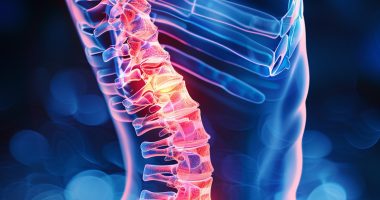Invasive breast ductal carcinoma
Definition
Invasive breast ductal carcinoma is a malignant neoplasm originating from the cells of the glandular epithelium of the inner lining of the milk ducts. In the initial stages, it flows asymptomatically. Later, it is manifested by a tumor-like formation, discharge from the nipple, and changes in the state of the skin, size, and shape of the breast. When the process spreads, weakness, hyperthermia, and weight loss appear. Symptoms due to the lesion of various organs by distant metastases are added. Diagnosis is established by considering the complaints, examination data, and results of additional studies. Treatment – surgery, radiotherapy, chemotherapy.
General information
Invasive ductal carcinoma is the most common type of breast cancer. It accounts for approximately 80% of all cases of malignant breast tumors. It occurs when ductal carcinoma in situ (DCIS) spreads outside the duct. The risk of developing invasive ductal carcinoma increases with age; 2/3 of patients are women over 55 years of age. In advanced stages, regional lymph node involvement and distant metastasis are observed. The prognosis at stages I-II is quite favorable; persistent remission is observed in 85% of patients with timely treatment. With metastasis to lymph nodes and distant organs, the survival rate decreases. Treatment is carried out by specialists in oncology and mammology.
Causes of invasive ductal carcinoma
The reasons for the occurrence of this pathology are not precisely clarified. Among the risk factors, experts point to unfavorable heredity. Women who have close relatives with invasive ductal carcinoma suffer from this disease 2-3 times more often compared to the population average. The likelihood of carcinoma also increases if there is a history of noninvasive ductal carcinoma, and the period between the two can vary widely. Sometimes, invasive ductal carcinoma is diagnosed 20-25 years after treatment for noninvasive cancer.
Risk factors include gynecologic history and chronic breast disease. Invasive ductal carcinoma is more often detected in women with early menarche, late onset of menopause, late first pregnancy, and no history of gestation, childbirth, or breastfeeding. In addition, breast cancer is more likely to occur in patients with cystic fibrosis mastopathy and fibroadenoma of the breast.
The development of invasive ductal carcinoma can be provoked by prolonged (over several years) use of hormonal drugs. Oral contraceptives can play a negative role in the reproductive age, in the menopause – drugs to eliminate the manifestations of menopause. In addition to the above factors, high levels of radiation, radiotherapy for other cancers, diabetes mellitus, hypothyroidism, obesity, and arterial hypertension are also significant.
Symptoms of invasive ductal carcinoma
In the early stages, the disease is asymptomatic. Usually, the neoplasm can be detected only through regular examinations and self-examinations at the initial stage. On palpation, a painless dense nodule without clearly defined borders is detected. The first noticeable sign is often transparent, yellowish-green, or bloody discharge from the nipple, appearing regardless of the phase of the menstrual cycle. With the progression of invasive ductal carcinoma, the amount of discharge increases, and maceration of the skin, erosions, and ulcers in the areola area are possible.
The skin over invasive ductal carcinoma initially becomes pink, purplish, or reddish and then begins to peel. Umbilication(pulling of the skin in the area of the neoplasm) and the “lemon peel symptom” (excessive porosity of the skin in the folded area) may be detected. Gradually, the external deformity becomes more and more noticeable. Sick breasts in size, shape, and external contours differ from healthy breasts. The nipple may be retracted.
Invasive ductal carcinoma shows both local and general signs of cancer: weakness, increased fatigue, loss of appetite, aversion to meat products, anemia, weight loss, and hyperthermia. Tumor-like masses are palpated in the axillary region when invasive ductal carcinoma metastasizes to regional lymph nodes. Swelling of the upper limb on the affected side and pain and discomfort when trying to raise the arm are possible.
Distant metastases result from the spread of cancer cells in the bloodstream. Invasive ductal carcinoma usually metastasizes to the bones, lungs, skin, liver, ovaries, and brain. When metastasizing to the bones, patients are bothered by back and limb pain. If it metastasizes to the liver, ascites may develop.
Diagnosis and treatment of invasive ductal carcinoma
Diagnosis is based on complaints, history, external examination results, and data from additional studies. An extended examination is indicated in the presence of at least one alarming symptom. Patients with suspected invasive ductal carcinoma are referred for review mammography in three projections: targeted mammography, ductography, MRI, and ultrasound of the breast with regional lymph nodes. Examination of the nipple smear of the mammary gland is carried out. Determination of oncological marker CA 15-3 in the blood is carried out. Biopsy of invasive ductal carcinoma, histologic, immunohistochemical, and cytologic examination of the biopsy. To exclude metastases, lung radiography, radiography of limb bones, ultrasound of internal organs, and other studies are prescribed.
Treatment tactics are determined taking into account the stage of the process, the hormonal status of invasive ductal carcinoma (hormone-dependent or hormone-independent), and HER2 status of the tumor. In the initial stages, radical breast resection or subcutaneous mastectomy is performed. In the case of advanced invasive ductal carcinoma, radical mastectomy or mastectomy with simultaneous irradiation is performed. If possible, reconstruction or one-stage breast prosthesis is performed. If there are contraindications to large-scale surgical intervention (advanced age, severe somatic pathology), ablation with lymphadenectomy is used.
Radiation therapy and chemotherapy are prescribed in the postoperative period. In stage III and IV invasive ductal carcinoma, chemotherapy is started. If the HER-2 gene is detected, lapatinib and its analogs are used. Hormonal drugs are used in hormone-dependent neoplasms. After surgery, patients are referred to psychological rehabilitation. In the distant period, if necessary, reconstructive surgeries are performed to eliminate the cosmetic defect.
All these treatment options are available in more than 880 hospitals worldwide (https://doctor.global/results/diseases/ductal-carcinoma-in-situ-dcis). For example, Radical mastectomy can be performed in 28 clinics across Turkey for an approximate price of $6.9 K (https://doctor.global/results/asia/turkey/all-cities/all-specializations/procedures/radical-mastectomy).
Prognosis and prevention of invasive ductal carcinoma
The prognosis in invasive ductal carcinoma is determined by the stage, extent of the process, degree of malignancy of the neoplasm, number of metastases, and some other factors. According to various data, stage I five-year survival rate ranges from 85-95%; stage II – 66-80%; and stage III – 41-60%. The average life expectancy of patients with stage IV tumors is 2-3.5 years; 25-35% of patients manage to live more than five years, 10% – more than ten years.
The primary means of preventing invasive ductal carcinoma are regular check-ups and self-examinations. All women of childbearing age should visit a mammologist annually and undergo breast ultrasound. For patients over 35, review mammography is prescribed once every two years, and at 50 years, annually. If foci of calcification are detected in the mammary gland, patients are referred for biopsy. If desired or indicated, a study for the presence of genetic mutations that increase the risk of invasive ductal carcinoma of the breast is performed.
Self-examinations are recommended on days 8-12 of the menstrual cycle. It is necessary to carefully examine both mammary glands in a mirror, paying attention to the symmetry of size and shape and changes in the structure or color of the skin. Then, you should consistently feel mammary glands and axillary lymph nodes and press on the nipple to ensure no discharge. The presence of at least one symptom characteristic of invasive ductal carcinoma is a reason to see a mammologist or oncologist immediately.

